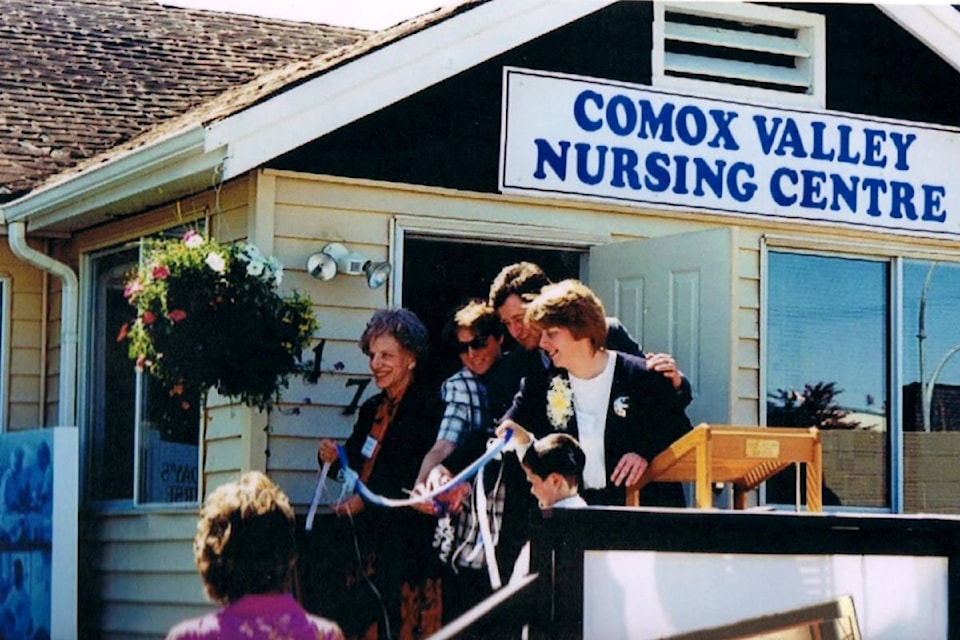History was made 25 years ago on May 19th, 1994 when the Comox Valley Nursing Centre (CVNC) was opened.
This project put the Comox Valley in the public eye, both provincially and nationally. Eleven communities in BC had applied for the funding, and only our community was successful.
This was a demonstration project that would allow nurses to work to the full scope of their practice, to work with the community, in order to identify and address health needs not addressed by existing services .. .All of this was to be within a primary health care framework.
Principles of primary health care include equity, community participation, services that take into account the impact of poverty and poor housing, health promotion, prevention, cure and rehabilitation, an integrated referral system with team based care and a client-centred approach.
The CVNC began with an open door approach and there were no criteria that limited who could get service. To quote a member of the community advisory committee: “If your issue is a health concern, bring it! We don’t tell you what is acceptable. No need to fit a certain category or programme.” Every time a person walked through the door, seeking service, they were advising the staff about community health needs. The staff had the freedom and encouragement to explore innovative ways to meet those needs.
What became clear was the need to support people living with chronic diseases, those conditions that couldn’t necessarily be cured – chronic pain, arthritis, chronic pulmonary disease, eating disorders, and more. Assistance came in the form of understanding clients’ experiences through their stories and helping them reach their goals which often included better understanding of the disease, symptom management and hope for a better future. Listening and learning with the clients was important. Working with their family doctor and health care team, was also a key component.
Staff built trusting relationships with their clients and professional colleagues and offered a collaborative style to primary health care. Now, 25 years later, the centre uses an integrated, multi-disciplinary approach that has made it a leader in the management of chronic pain and chronic disease. Physicians and nurse practitioners now work in the centre and a Health Connections programme directly links clients living with complex health issues to team based care. A strong focus for this team is the Opioid Agonist Treatment programme, prescribing Suboxone and Methadone to people with opioid use disorder. Homelessness and poverty often compound this disorder.
Along the way, volunteers were a critical part of the service – contributing their wisdom to advisory committees, greeting clients in the waiting room, making them feel welcome, putting together education packages and assisting staff with group events.
Key milestones over the past 25 years include: a chronic pain (CP) support group; an island wide CP stakeholders meeting; a fully developed CP programme (physio, swim, meditation/ relaxation classes, physician specialists for in-depth assessment, pharmacy consultation and recreation passes); women’s health events (collaboration between 5 agencies working with women), men’s health days and a support group for men ‘in transition’; ongoing access to men’s counselling 2 days a week, an eating disorder programme including a Campbell River component and nutrition services; and outreach and drop in for those with mental health and addiction issues who are often at risk of homelessness. In 2000, the Centre was nominated for a UN Gift of Cultural Peace Award.
From a demonstration project in 1994, funded for only 18 months, to a fully fledged integrated program 25 years later is a credit to the Comox Valley. The Centre put us on the map for innovation in health care services and it continues to lead the way. We honour all of the people who supported the journey and helped make the Centre so successful.
